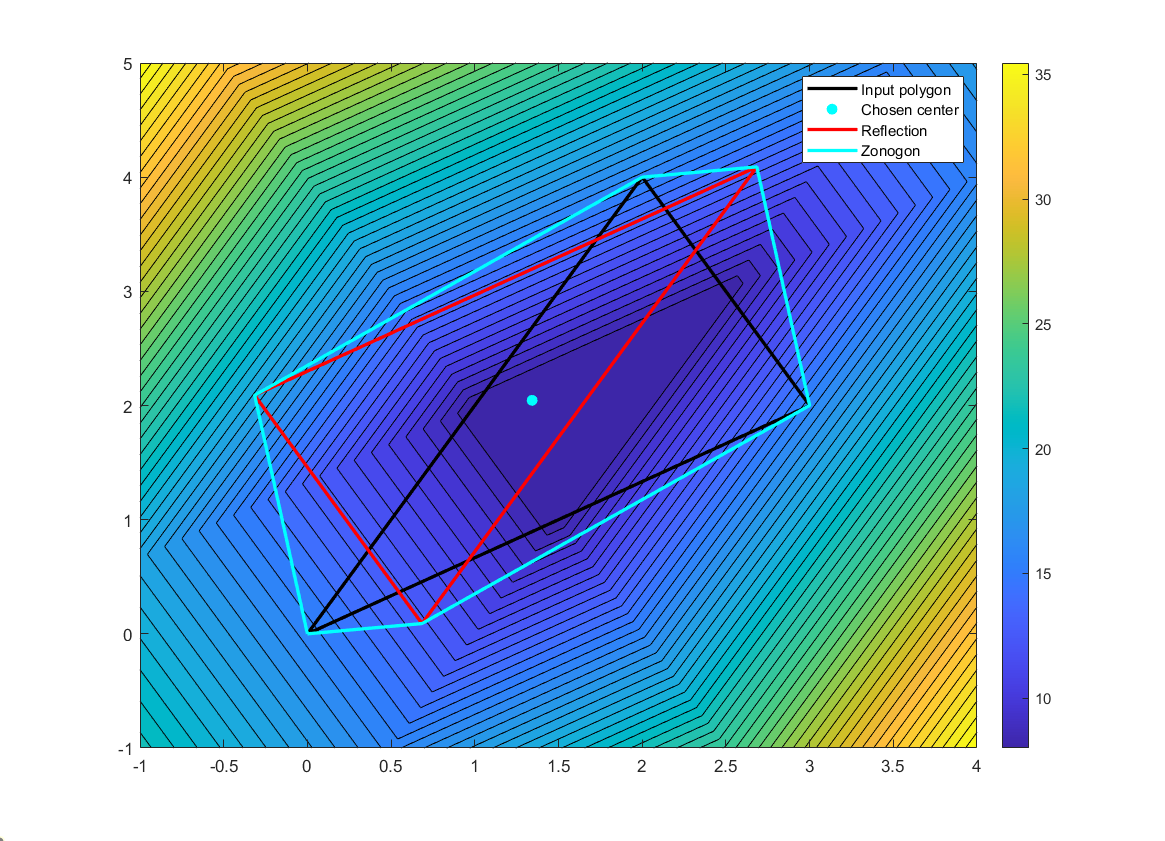- Given a convex polygonal region C, how does one find/characterize the smallest zonogon (centrally symmetric convex polygon https://en.wikipedia.org/wiki/Zonogon) that contains C?
Note 1: In question 1, smallest could mean least area or least perimeter. So, one can also ask which C maximizes the difference between its least area and least perimeter convex centrally symmetric container.
- Given a convex planar region C, how does one find/characterize the largest zonogon contained within C?
Guess: At least the largest area internal zonogon of C seems to have its center on the medial axis of C. Not sure about the least perimeter one - this zonogon could degenerate into a zero area one in some cases.
Note 2: Analogous questions can be asked about axisymmetric containers - and containees - of C.
Note 3: Some similar questions are recorded at Curves of constant width that contain triangles, Smallest triangles that contain 2D convex regions with reflection symmetry and linked pages.

